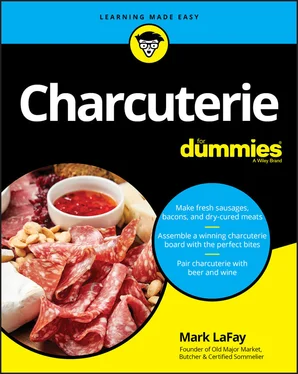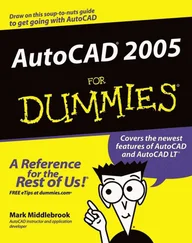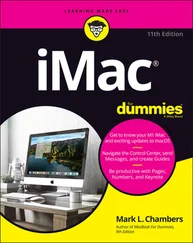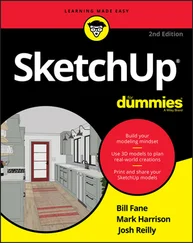2 Chapter 2FIGURE 2-1: A standard kitchen apron.FIGURE 2-2: Stay safe with food-safe gloves.FIGURE 2-3: ‘Clean and Sanitize’ prep list.FIGURE 2-4: Time and temperature table from FSIS Appendix A .FIGURE 2-5: Temperature probe.FIGURE 2-6: The Salt Cured Pig Facebook page.FIGURE 2-7: Facebook search feature.
3 Chapter 3FIGURE 3-1: Carmel Winter Farmers Market, Carmel, Indiana.FIGURE 3-2: Large English black hog.FIGURE 3-3: Me with a nice Midwestern white-tail deer.FIGURE 3-4: Ancient salt mine.FIGURE 3-5: Sea salt production.FIGURE 3-6: Pink salt #1.
4 Chapter 4FIGURE 4-1: Salami coated with white Penicillium mold.FIGURE 4-2: Knot-tying steps.
5 Chapter 5FIGURE 5-1: Meat sized for the grinder hopper opening.FIGURE 5-2: Meat and ingredients prior to mixing and grinding.FIGURE 5-3: Plates with holes of different diameters.FIGURE 5-4: Grinder hopper guard and stuffing tool.FIGURE 5-5: Food processor.FIGURE 5-6: Hog, sheep, and beef casings.FIGURE 5-7: Fibrous casing prior to stuffing.FIGURE 5-8: Collagen casing.FIGURE 5-9: Three stuffers of different sizes.FIGURE 5-10: Stuffer assembly.FIGURE 5-11: Clamp it down.FIGURE 5-12: Progression of loading a casing onto the stuffer horn.FIGURE 5-13: Hand positioning on the stuffer.FIGURE 5-14: Steps to distribute fill within a sausage rope.
6 Chapter 7FIGURE 7-1: Bactoferm lactic acid starter culture.FIGURE 7-2: Professional fermentation chamber.FIGURE 7-3: Sausage-drying rack.FIGURE 7-4: Removing pH test paper to test the pH of a salami.FIGURE 7-5: Milwaukee Meat pH Meter.FIGURE 7-6: Steps to tying a bubble knot.FIGURE 7-7: Bactoferm Mold-600.
7 Chapter 8FIGURE 8-1: Goose the Market deli case.FIGURE 8-2: Brie cheese.FIGURE 8-3: Foxglove cheese.FIGURE 8-4: Gouda cheese.FIGURE 8-5: Manchego cheese.FIGURE 8-6: Merlot BellaVitano.FIGURE 8-7: Whole-grain mustard.FIGURE 8-8: Assorted jams and marmalade.FIGURE 8-9: Marcona almonds.FIGURE 8-10: The “Four Feet of Meat” FIGURE 8-11: The Dooley.FIGURE 8-12: The Stoneking.
8 Chapter 9FIGURE 9-1: Napa Valley.FIGURE 9-3: Barrels in a cellar.FIGURE 9-2: Montes production facility.
9 Chapter 12FIGURE 12-1: La Quercia acorn-fed prosciutto.FIGURE 12-2: Smoking Goose Delaware Fireball.FIGURE 12-3: Terrine and Pâtés shop in Montreal.FIGURE 12-4: Grammy Mae’s summer sausage.FIGURE 12-5: Les Cochons tout ronds, at the Marché Jean-Talon.FIGURE 12-6: Cinco Jotas Jamon.FIGURE 12-7: Brooklyn Cured bresaola.FIGURE 12-8: Salumi Molé Salami.
1 Cover
2 Table of Contents
3 Begin Reading
1 iii
2 iv
3 1
4 2
5 3
6 5
7 6
8 7
9 8
10 9
11 10
12 11
13 12
14 13
15 14
16 15
17 16
18 17
19 18
20 19
21 20
22 21
23 22
24 23
25 24
26 25
27 26
28 27
29 28
30 29
31 30
32 31
33 32
34 33
35 34
36 35
37 36
38 37
39 39
40 40
41 41
42 42
43 43
44 44
45 45
46 46
47 47
48 48
49 49
50 50
51 51
52 53
53 54
54 55
55 56
56 57
57 58
58 59
59 60
60 61
61 62
62 63
63 64
64 65
65 66
66 67
67 68
68 69
69 70
70 71
71 72
72 73
73 74
74 75
75 76
76 77
77 78
78 79
79 81
80 82
81 83
82 84
83 85
84 86
85 87
86 88
87 89
88 90
89 91
90 92
91 93
92 94
93 95
94 96
95 97
96 98
97 99
98 100
99 101
100 102
101 103
102 104
103 105
104 106
105 107
106 108
107 109
108 110
109 111
110 112
111 113
112 114
113 115
114 116
115 117
116 118
117 119
118 120
119 121
120 122
121 123
122 124
123 125
124 126
125 127
126 128
127 129
128 130
129 131
130 132
131 133
132 134
133 135
134 136
135 137
136 138
137 139
138 140
139 141
140 142
141 143
142 144
143 145
144 146
145 147
146 148
147 149
148 150
149 151
150 152
151 153
152 154
153 155
154 156
155 157
156 158
157 159
158 161
159 162
160 163
161 164
162 165
163 166
164 167
165 168
166 169
167 170
168 171
169 172
170 173
171 174
172 175
173 176
174 177
175 178
176 179
177 180
178 181
179 182
180 183
181 184
182 185
183 187
184 188
185 189
186 190
187 191
188 192
189 193
190 194
191 195
192 196
193 197
194 198
195 199
196 200
197 201
198 202
199 203
200 204
201 205
202 206
203 207
204 208
205 209
206 210
207 211
208 212
209 213
210 214
211 215
212 216
213 217
214 219
215 221
216 222
217 223
Since as far back as written history takes us, humans have been finding ways to evolve and improve; the result has been a constant evolution in how we live so that life can get easier. Think about the small things, like fire, the wheel, wielding fire, stone tools, metal tools, and so on. Arguably one of the greatest innovations for the human race was learning the art of cultivation and preservation. This led to a shift from a hunter-gatherer way of life to an agrarian culture where animals were domesticated, food was farmed, and methods of preservation were discovered and used so that humankind could weather the storms of four-season living and gradually start spreading out across the world.
Maybe it’s this connection to the ways of old that is fueling a resurging interest in seasoning, salting, and preserving meats. Or it could be a pushback against the industrialization of the food system here in the United States. Whether we are romanticizing “the way it used to be” or simply looking for a better way to live in a modern world using influences from the past, the growing interest in artisanal meat craft is apparent.
Charcuterie, a French word, has become a universal term (at least in the U.S.) for preserved meats. However, there is a historical significance to this word. Charcuterie is a craft of maximum utilization and preservation of harvested animals from a time when refrigeration was either limited or nonexistent and animal protein was a luxury, not a staple. Imagine that, a plate filled with potatoes and some meat, not meat and some potatoes. With charcuterie, you can give new life to artifacts of cultural heritage that have, until now, been relegated to the history books.
Sometimes the hardest part of trying something new is confronting our fear of the unknown. The goal of this book is to eliminate 90 percent of your fear of working with meat and to give you the tools you need to get started. Crafting delicious fresh and cured meats alike is a pan-cultural skill that has been passed down generationally. The good news is that you don’t need to have any prior knowledge about butchery to get started. In fact, you don’t even need to have a lot of experience with cooking. This book is designed to give you a breadth of knowledge without too much depth so that it isn’t overwhelming.
Part 1of this book focuses on helping you learn about the gear you will need to get the job done. Let’s be honest; the right gear can make a difficult task more manageable. You will learn what gear is used for each task, where to find it, and how to care for it. You will also learn how to stay safe when handling animal proteins. The reason I want to eliminate only 90 percent of your fear is because when working with potentially hazardous food like animal proteins, you need to have a little reverent fear. This will keep you vigilant as you dig in and start processing your meat treats. Finally, you will learn the fundamentals of finding good raw ingredients; the differences among heritage, commodity, and wild proteins; and how to read and navigate recipes.
Читать дальше












